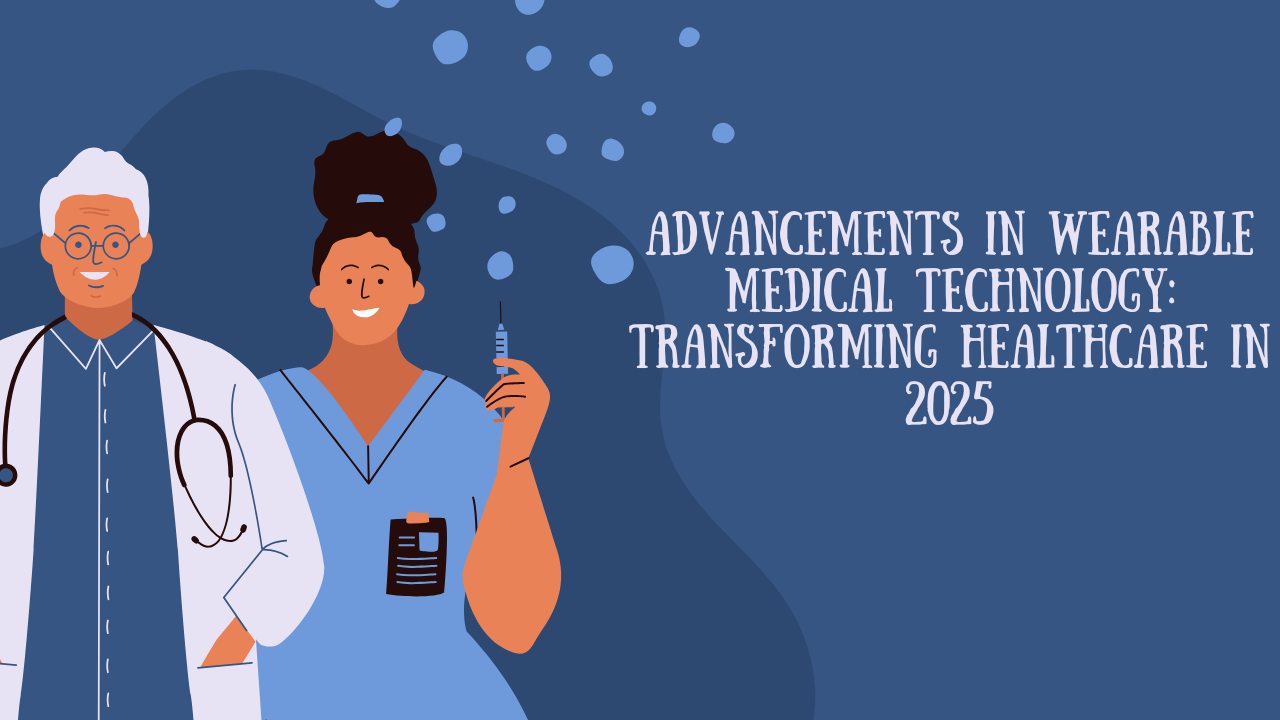Introduction
Advancements in Wearable Medical Technology: Transforming Healthcare in 2025 Wearable medical technology is revolutionizing healthcare by providing real-time monitoring, early disease detection, and personalized health management. These devices range from smartwatches and biosensors to AI-powered wearables that track vital signs, detect abnormalities, and improve overall well-being. With continuous advancements, wearable health technology is becoming more accurate, accessible, and integrated into daily life.
In this article, we explore the latest advancements in wearable medical technology and how they are shaping the future of healthcare.
1. The Growing Importance of Wearable Medical Technology
Wearable medical devices offer multiple benefits, including:
Continuous health monitoring – Real-time tracking of heart rate, oxygen levels, glucose, and other vital signs.
Early disease detection – AI-powered wearables identify irregularities and alert users to potential health risks.
Personalized treatment – Data collected helps doctors customize treatments based on patient history.
Remote patient monitoring – Ideal for chronic disease management and post-surgery recovery.
2. Latest Advancements in Wearable Medical Technology
A. Smartwatches with Advanced Health Tracking
Features: ECG monitoring, blood oxygen tracking, sleep analysis, stress monitoring.
Examples: Apple Watch Series, Samsung Galaxy Watch, Fitbit Sense.
Impact: Provides instant health insights and early warning signs of conditions like atrial fibrillation (AFib).
B. Wearable ECG Monitors
Features: Records heart rhythm, detects irregularities, syncs with mobile apps.
Examples: KardiaMobile, Withings ScanWatch.
Impact: Helps individuals track heart health and prevent cardiac events.
C. Continuous Glucose Monitors (CGMs)
Features: Real-time blood sugar monitoring, alerts for spikes or drops, smartphone integration.
Examples: Dexcom G7, Freestyle Libre 3.
Impact: Beneficial for diabetic patients in managing blood sugar levels effectively.
D. Smart Rings for Health Monitoring
Features: Sleep tracking, stress analysis, heart rate variability (HRV).
Examples: Oura Ring, Circular Ring.
Impact: Provides insights into overall wellness with minimal effort.
E. AI-Powered Wearable Biosensors
Features: Detects early signs of diseases, monitors vital signs, AI-driven analytics.
Examples: BioSticker, VitalPatch.
Impact: Enhances early disease diagnosis and patient monitoring.
3. Comparison of Wearable Medical Devices
| Device Type | Key Features | Best For | Examples |
|---|---|---|---|
| Smartwatches | ECG, heart rate, sleep tracking | General health tracking | Apple Watch, Fitbit Sense |
| Wearable ECG Monitors | Heart rhythm detection, mobile syncing | Heart disease monitoring | KardiaMobile, Withings ScanWatch |
| Continuous Glucose Monitors (CGMs) | Real-time glucose tracking, alerts | Diabetic patients | Dexcom G7, Freestyle Libre 3 |
| Smart Rings | Sleep tracking, HRV, stress monitoring | Holistic wellness | Oura Ring, Circular Ring |
| AI-Powered Biosensors | Early disease detection, AI analytics | Remote patient monitoring | BioSticker, VitalPatch |
4. The Future of Wearable Medical Technology
AI and Machine Learning Integration – Future wearables will use AI for predictive health insights.
Non-Invasive Glucose Monitoring – Researchers are developing needle-free glucose monitors for diabetes patients.
Brain-Monitoring Wearables – Devices tracking mental health and neurological conditions are in development.
5G and IoT Connectivity – Improved data sharing and real-time health analysis with faster connectivity.
5. Conclusion
Wearable medical technology is transforming how people track their health, manage chronic diseases, and access real-time medical insights. Innovations like smartwatches, ECG monitors, AI-powered biosensors, and smart rings are making healthcare more accessible, personalized, and proactive.
With continuous technological advancements, the future of wearable medical technology promises even greater precision, affordability, and impact on global healthcare.
